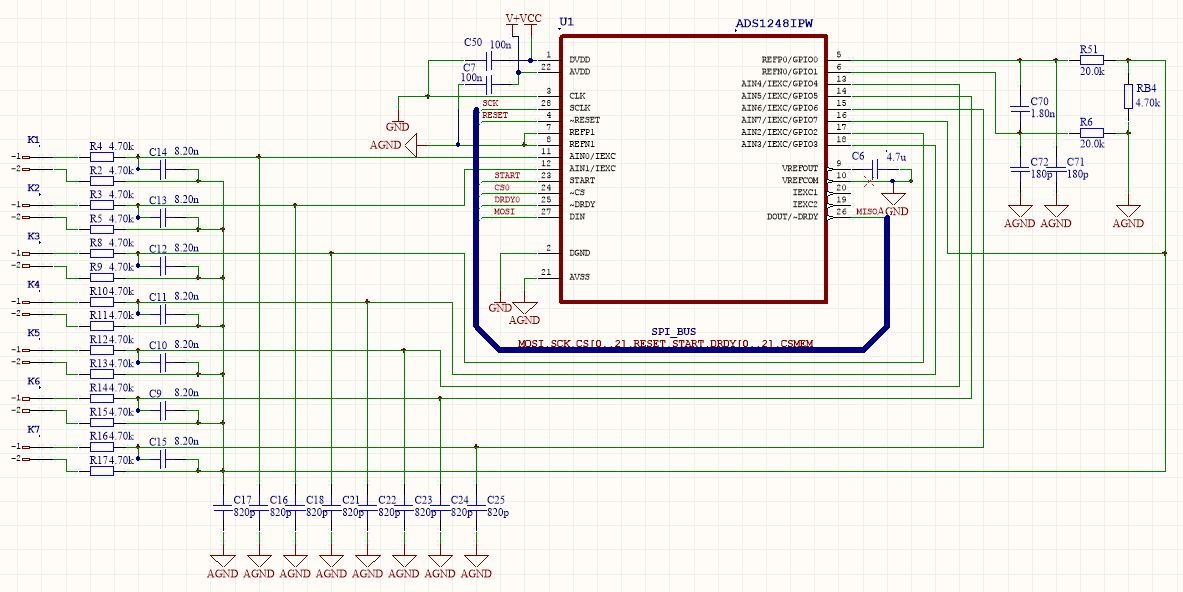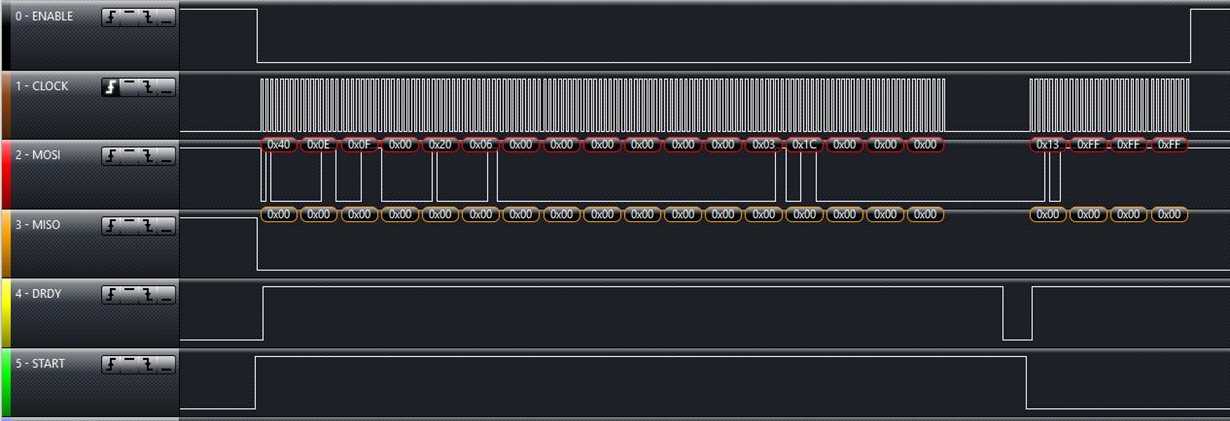Hello,
I have an application for measuring temperature using ADS1248 and 2-wire connection of Pt1000 sensors. The schema is in the first picture bellow. For controll the ADS1248 chip I am using ATmega8 microcontroller.
I am able to write (WREG) and read (RREG) a configuration registers. Now I have connected two Pt1000 sensors as example for trying function. I have a problem with reading data register once (RDATA) as you can see from logic analyzer diagram. I am not able to read any number (only 0x00 - 0x00 - 0x00).
I measured a current through the Pt1000, it seems ok, the reference voltage on RB4 (4k7) is ok too.
I am using IDAC0 = 250uA, PGA = 1 and 320 SPS.
Here is my configuration sequence:
unsigned char WRITE[] = {0x40, 0x0E, 0x0F, 0x00, 0x20, 0x06, 0x00, 0x00, 0x00, 0x00, 0x00, 0x00, 0x03, 0x1C, 0x00, 0x00, 0x00};
and RDATA sequence:
unsigned char RDATA[] = {0x13, 0xFF, 0xFF, 0xFF};
Now I don´t know, how to analyze this problem. What to check...
Thank you in advance for your helps.
Vojta K.




